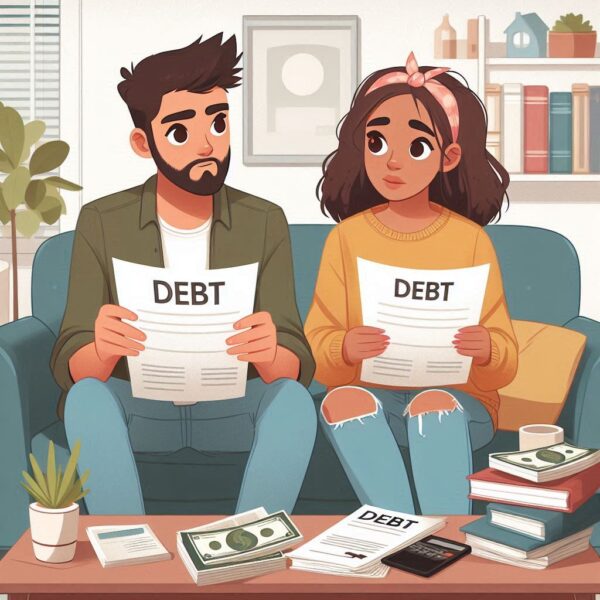Getting a clear picture of your debt situation is the first step toward financial freedom. It’s not just about looking at bills piled up; it’s about understanding what you’re dealing with. Start by gathering all your financial statements. This includes credit card bills, student loans, car loans, and any other line of credit you might have.
Knowing what types of debts you have matters a lot. Generally, there are high-interest debts, like credit cards, that can quickly spiral out of control. Then, there are lower interest debts, like student loans. You’ll want to identify which debts should be tackled first based on their urgency and interest rate.
Calculate your total debt. Often, people find the number surprising, and it might seem overwhelming at first. However, knowing exactly how much you owe gives you a target to aim for and the numbers you need to plan effectively.
Debt doesn’t just weigh on your finances but also impacts your credit score. Understanding this impact can help in planning your repayment strategy more prudently. The lower your credit score drops, the harder it gets to secure favorable terms for loans and credit in the future.
Create a priority list of your debts. Sort them by interest rate, balance, and urgency. Having a method to your repayment plan ensures you’re tackling the most pressing debt issues first, which can save you money on interest in the long run. With the right strategy, you’re not just paying off debt; you’re making strides toward a healthier financial future.
Here’s a little transparency: Our website contains affiliate links. This means if you click and make a purchase, we may receive a small commission. Don’t worry, there’s no extra cost to you. It’s a simple way you can support our mission to bring you quality content.”
Contents
- 1 Creative Strategies When There’s No Extra Money
- 2 Debt Repayment Simulator
- 3 Building Successful Habits for Efficient Debt Reduction
- 4 Community and Professional Resources at Your Disposal
- 5 Real-Life Success Stories: Overcoming Debt Without Extra Cash
- 6 A Personalized Plan to Pay Off $30,000 in Debt in One Year
Creative Strategies When There’s No Extra Money
When it feels like there’s no extra cash to spare for debt repayment, creativity becomes your best friend. You don’t always need more money; sometimes, it’s about using what you have in a smarter way. Consider employing zero-cost debt payoff strategies that focus more on optimizing your current finances than increasing income.
One approach is to compare the ‘debt avalanche’ and the ‘debt snowball’ methods. The avalanche focuses on paying off high-interest debts first, saving you money in the long run. Meanwhile, the snowball method gives a psychological boost by quickly clearing smaller debts. Both methods can be game-changers, depending on what motivates you. Figure out which strategy resonates more with your financial habits and mindset.
Negotiating with creditors might seem daunting, but it can lead to better terms. Many creditors would rather receive smaller payments regularly than nothing at all. They might even lower your interest rate or waive certain fees. It never hurts to ask, especially if your financial situation has changed unexpectedly.
Next, look over your budget and see where adjustments can be made. Even small tweaks in daily expenses, like curbing dining out or canceling unused subscriptions, can redirect funds toward debt. This strategy relies less on finding extra money and more on making the most of current funds.
Lastly, don’t completely dismiss the idea of boosting your income with side hustles or temporary gigs that require little to no upfront investment. Plenty of opportunities exist online, like freelance work or selling unused items, that can give you a little extra cash to throw at your debts.
Debt Repayment Simulator
Enter your debt details below to see your month-by-month payoff plan.
Building Successful Habits for Efficient Debt Reduction
Developing good financial habits is crucial when you’re aiming to get out of debt, especially when funds are tight. Establishing a disciplined routine can help you stay on track and avoid unnecessary spending.
One effective method is going “cash-only”. By using cash instead of cards for daily purchases, you naturally limit spending to what you actually have on hand. It might sound old-school, but physically parting with cash has a way of making us think twice before buying.
Tracking where every dollar goes is another trick to finding potential savings. Apps or even a simple spreadsheet can help you understand your spending patterns, revealing areas where you can cut costs without significantly altering your lifestyle.
Setting small, achievable goals along the way will keep you motivated. Instead of focusing solely on the daunting task of becoming completely debt-free, break it down into manageable chunks. Celebrate the small victories – paying off a single credit card or cutting a particular bill – to maintain momentum.
Lastly, build an emergency fund. It might seem counterintuitive when you’re trying to clear debts, but having a small buffer for unexpected expenses can prevent you from plunging back into debt the moment something unplanned happens.
Community and Professional Resources at Your Disposal
When tackling debt, it’s vital to remember that you don’t have to go it alone. Plenty of community resources and professional services are designed to help people find their financial footing.
Community programs often host free workshops or seminars on budgeting, saving, and debt management. These can offer valuable insights and practical tips directly relevant to your predicament. Sometimes, understanding others’ experiences and strategies gives you fresh ideas for your situation.
Look for free or low-cost financial counseling services in your area. Nonprofit organizations frequently offer sessions where you can get personalized advice tailored to your specific debt concerns.
The internet is a treasure trove of online tools and calculators that can help manage debt more effectively. From budget planners to repayment calculators, these tools make it easier to visualize and plan your debt repayment journey.
Don’t underestimate the power of community support groups, whether online or in-person. Sharing experiences and advice with others in similar situations can be a powerful boost to your motivation.
Finally, consider looking into government or nonprofit assistance programs. These can sometimes offer relief options, such as lower interest rates or deferred payments, that might just make managing your debts a bit easier.
Real-Life Success Stories: Overcoming Debt Without Extra Cash
Even when it feels like there’s no extra money to spare, many individuals have transformed their financial lives with determination, smart budgeting, and creative repayment strategies. Here are a few real-life case studies paired with factual insights that illustrate what’s possible:
Sarah’s Transformation
Sarah, a single mother from Ohio, found herself overwhelmed by credit card debt following unexpected medical bills. With her income stretched thin, she made a commitment to overhaul her spending habits:
- Budget Overhaul: Sarah began by tracking every expense and eliminating non-essential costs, such as dining out and redundant subscriptions.
- Debt Snowball Method: By focusing on paying off her smallest, highest-interest debts first, she built momentum with each cleared balance.
- Result: In just 18 months, Sarah eliminated her most burdensome debt, proving that disciplined budgeting and lifestyle adjustments can lead to financial freedom—even without extra income.
Michael’s Journey to Financial Freedom
Michael, a mid-career professional burdened by both student loans and high-interest credit card debt, decided to tackle his financial challenges head-on:
- Structured Repayment Plan: Michael used free online debt management tools to organize his debts by interest rate, prioritizing the costliest ones first.
- Negotiating with Creditors: Despite having no additional cash flow, he reached out to his lenders to negotiate better interest rates and repayment terms.
- Result: Over three years, Michael reduced his total debt by nearly 50%, demonstrating that a clear, methodical approach and proactive communication with creditors can make a significant difference.
Emma’s Debt-Free Blueprint
Fresh out of college, Emma faced mounting student loan debt alongside everyday expenses. Instead of chasing extra income, she refocused her approach:
Result: Within two years, Emma not only paid down a substantial portion of her debt but also managed to start building an emergency fund—a critical step in preventing future debt.
Rigorous Monthly Budgeting: Emma scrutinized her monthly expenses, making tough decisions to cut back on non-essentials.
Debt Avalanche Method: She prioritized paying off her highest-interest debt first, which minimized the overall interest accrued.
A Personalized Plan to Pay Off $30,000 in Debt in One Year
Creating a plan to eliminate $30,000 of debt in a year seems daunting, but a strategic approach can make it achievable. Start by mapping out a detailed budget that’s realistic but also challenges you to be as frugal as possible. Every dollar saved can be directed toward debt.
Explore ways to boost your income without upfront costs. Consider temporary gigs or freelance work that fits into your schedule. Platforms like gig economy apps can open doors to earning a bit extra, even in small increments.
SMART goals—Specific, Measurable, Achievable, Relevant, Time-bound—are your blueprint. Not only do they clarify what needs doing, but they also keep you accountable. For instance, set clear monthly targets for debt reduction, adjusting as needed.
Understand the mental game behind such a lofty financial goal. Motivation is key, and visual reminders of progress can be incredibly encouraging. Use a chart to mark your debt decline or celebrate when a debt milestone is achieved.
Keep up the momentum by regularly reviewing your strategy. Every month, reassess your budget, track achievements, and make necessary changes. With the right mindset and commitment, the possibility of zeroing out that $30,000 debt becomes very real.y real.

